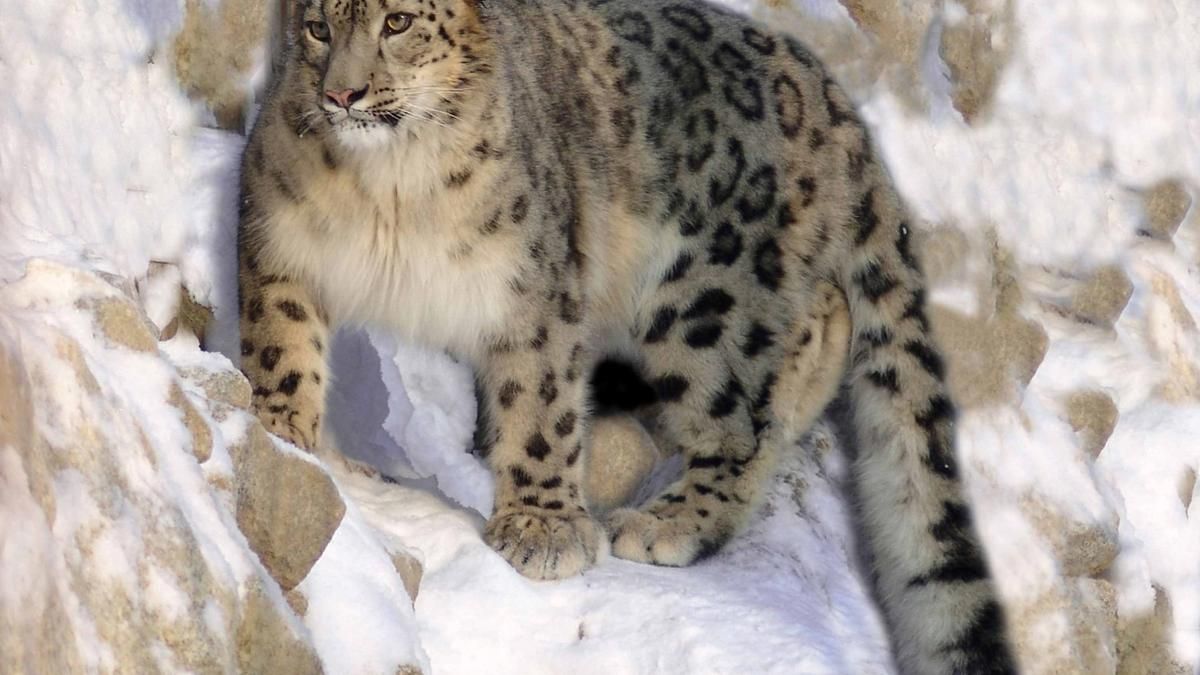Snow leopards are the world’s least genetically diverse big cat

Snow Leopards: The World’s Least Genetically Diverse Big Cat
Introduction
A recent study by Stanford University, published in the Proceedings of the National Academy of Sciences (PNAS), has revealed that the snow leopard (Panthera uncia) possesses the lowest genetic diversity among all big cat species, even lower than the cheetah, which has long been regarded as the benchmark for genetic depletion. The findings have significant implications for the long-term adaptability and survival of this elusive high-altitude predator, which occupies the mountainous regions of 12 Asian countries, including India.
Key Findings of the Study
Using whole-genome sequencing data from 37 snow leopards, the study concludes that the species’ low genetic diversity is not primarily a result of recent inbreeding but rather a reflection of persistently small population sizes throughout its evolutionary history.
- Low Heterozygosity and Genetic Purging
- The snow leopard exhibits the lowest heterozygosity among all big cats, including cheetahs.
- However, despite this genetic uniformity, the species has a lower deleterious homozygous load compared to other Panthera species.
- This indicates that over evolutionary timescales, harmful mutations have been “purged” from the population—a process through which less fit individuals fail to reproduce, thereby reducing the prevalence of detrimental genes.
- Evolutionary Implications
- Historical inbreeding at small population sizes, paradoxically, has contributed to the species’ relative genetic health by eliminating harmful mutations.
- Nonetheless, very low genetic diversity poses a serious constraint on the species’ ability to adapt to new environmental challenges such as disease, habitat change, or climate fluctuations.
- Population and Distribution
- Global population estimates range between 4,500 and 7,500 individuals.
- In India, a 2024 survey identified 718 snow leopards distributed across six Himalayan states: Ladakh (477), Uttarakhand (124), Himachal Pradesh (51), Arunachal Pradesh (36), Sikkim (21), and Jammu & Kashmir (9).
- India thus harbors approximately 10–15 percent of the global snow leopard population, making it one of the most crucial countries for their conservation after China and Mongolia.
Conservation Context and Challenges
Snow leopards were downlisted from Endangered to Vulnerable in 2017 by the IUCN, a decision that remains controversial given their small and fragmented populations. The species continues to face multiple anthropogenic threats:
- Climate Change: Warming in high-altitude Asian regions threatens snow leopard habitats and their prey base.
- Habitat Loss: Expanding infrastructure projects near international borders, including roads and military installations, are fragmenting habitats.
- Prey Decline and Retaliatory Killings: Decline of mountain ungulates (such as the Siberian ibex) and livestock depredation often lead to human–wildlife conflict.
- Poaching: Demand for pelts and body parts in the illegal wildlife trade persists.
Conservation Efforts in India
India’s Project Snow Leopard, launched in 2009, aims to safeguard the species through landscape-level management and community participation. Organisations like the Nature Conservation Foundation (NCF) and the Snow Leopard Trust have played critical roles in involving local communities in Ladakh, Himachal Pradesh, and Uttarakhand in monitoring and conservation activities.Local initiatives such as community-based tourism and homestays have created economic incentives for coexistence, reducing retaliatory killings. However, experts stress the need for improved genetic sampling and inter-agency cooperation to better understand and preserve the country’s snow leopard populations.
Significance of the Study
The Stanford study’s key contribution lies in its clarification that the snow leopard’s genetic homogeneity is ancient, not a product of recent demographic collapse. This insight shifts conservation focus from purely mitigating inbreeding to maintaining habitat connectivity and enabling gene flow across transboundary landscapes.It also highlights the importance of integrating genetic monitoring into species management plans—ensuring that conservation strategies are guided by molecular data rather than population counts alone.
Updated - October 14, 2025 06:30 am | The Hindu